Why do lemon leaves fall off and turn yellow at home and what to do?
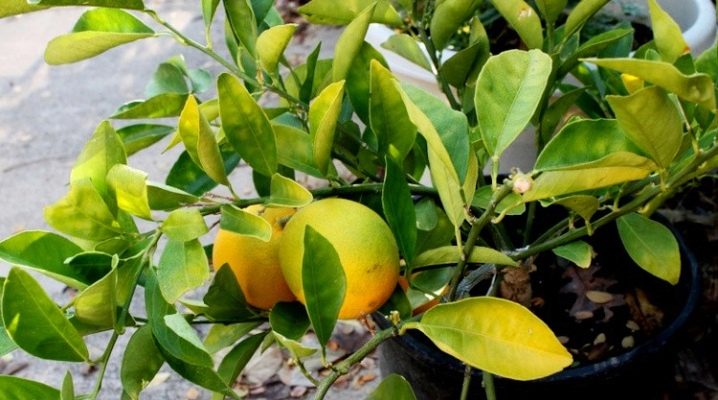
Today, exotic plants in apartments are far from uncommon. And one of the most popular examples in this regard is the lemon. Many have learned to successfully care for him and get good fruits even at home. But everything is not always so smooth. And sometimes the question arises of why lemon leaves turn yellow and fall off at home. You should deal with this in more detail.
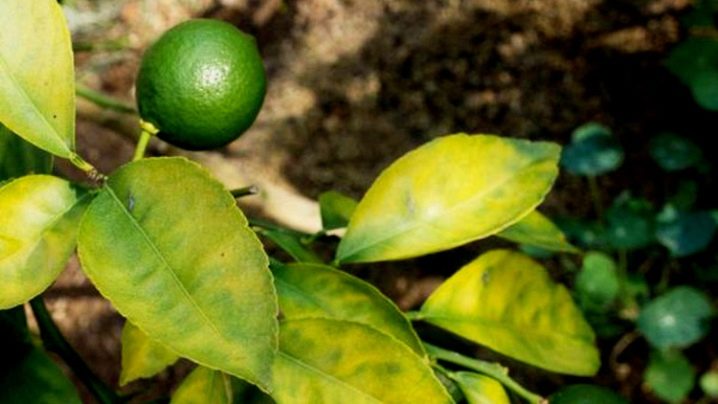
Invalid conditions
All the problems that can arise in a tree grown at home are signaled by the leaves. Therefore, it is important to monitor their condition. If the leaves of a lemon fall off at home, you should first pay attention to the conditions of detention. Perhaps they are violated. Then it is worth just optimizing them, and the state of the plant will return to normal.
Insufficient lighting
In its natural environment, lemon grows in countries where it is sunny and warm all year round, so it needs a lot of light. Often in apartments it is not possible to create such conditions due to the wrong position of the pot with the plant or too short daylight hours, especially in autumn and winter.
But at the same time, you should not expose the plant to direct sunlight either. The sill of the south window will be an unfortunate decision. The best option is to place the lemon near the southeast window. It will be good if at the same time there is only a transparent light curtain on the window.
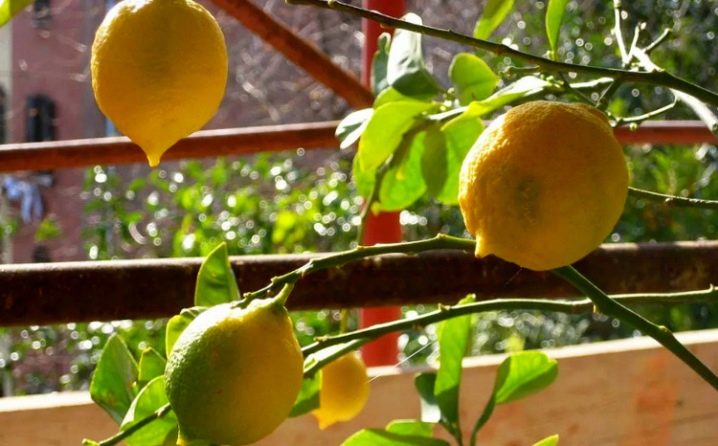
In winter, it is better to use a phytolamp, which will compensate for the lack of natural light. If the tree is large, foil can be laid around the container with it. It will reflect the light of the lamp and direct it upward.
Inappropriate humidity level
Dry air is another enemy of lemon. He needs a moisture content of at least 70%. If the air in the room is dry, you will have to spray the lemon with warm, settled water twice a day. A good solution would be to install a mini-fountain next to the tree, or a humidifier or a regular container of water next to the tree will also help.
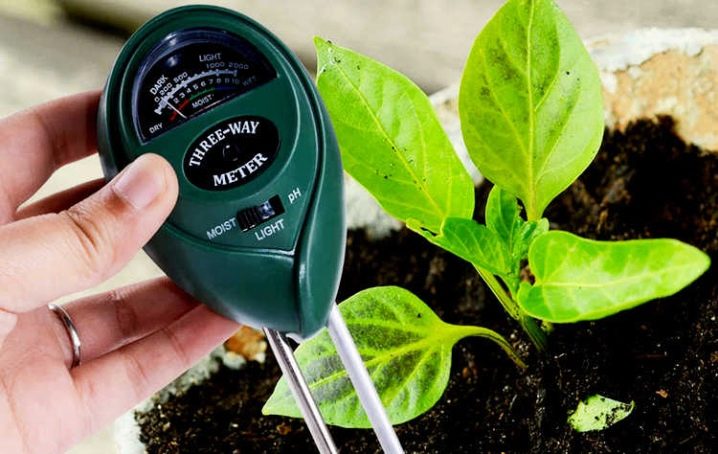
Temperature violation
Lemon does not tolerate drafts and cold air. In this case, the room still needs to be ventilated. This means that the plant must be positioned so that currents of cold air do not fall on it. The normal existence of a tree is possible in the temperature range from 18 to 23 degrees Celsius. But above 27 degrees - this is already the risk that the leaves will begin to turn yellow and fall off. Therefore, it is important not to stress the plant and ensure stable temperature values.
Poor care
The leaves of the indoor lemon turn yellow, the tips dry, the ovaries and flowers fall off due to improper care. If a lemon tree sheds its leaves, something needs to be done urgently. But before rushing to heal and fertilize the tree, you need to understand exactly what the mistakes are and start taking proper care of the tree.
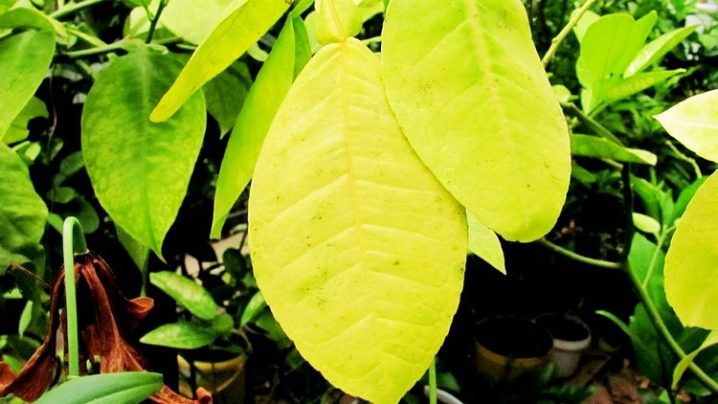
Watering
Lemon growing at home requires proper watering. Here, both excess and lack of moisture are destructive. If the ground is excessively dry, the leaves will turn yellow and fall off. With excessive moisture in the ground, the root system will begin to rot. Over time, the plant will stop developing, and one day it will be possible to find that all the leaves have fallen off.In this case, in order to reanimate the tree, you will have to dig it up, remove the rotten areas, dry it, and then move it to a container with new earth.
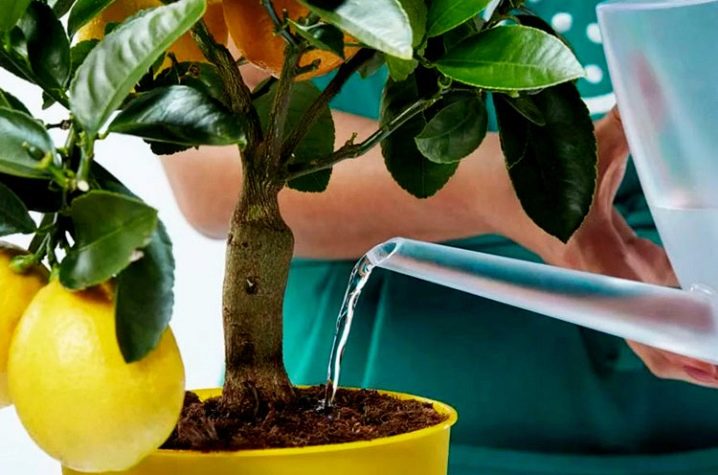
But in order to avoid such extreme measures, it is better to simply ensure proper watering initially.
The water should be separated and warm, lemon does not like cold and chlorinated water. Watering is best done based on the condition of the soil. Do not allow drying out or waterlogging. In winter, the plant needs less water, in summer - more. If in cold weather one watering every 7-10 days is enough, then in summer, especially hot, the number of waterings can increase up to 2-3 times over the same period of time.
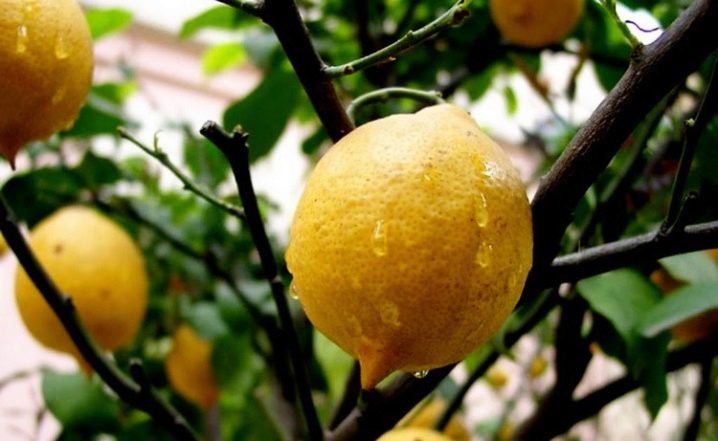
Top dressing
In order for the tree to develop correctly, it needs feeding. But in a reasonable amount, without fanaticism:
- if yellow spots appear on the leaves, this indicates that the lemon lacks nitrogen;
- when the edges of the plates turn yellow, it can be concluded that the tree needs phosphorus;
- evenly yellow foliage will indicate a lack of iron.
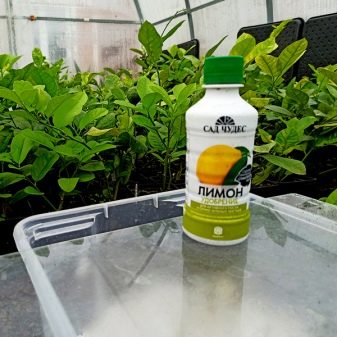
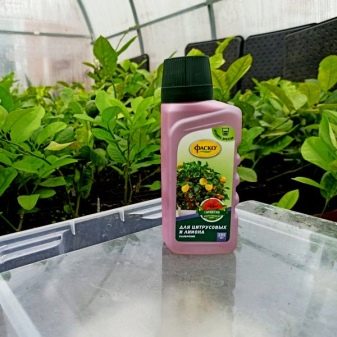
To avoid such problems, it is best to buy citrus fertilizer in a specialized store, dilute and apply it according to the instructions, which are necessarily present on the package.
It is enough to feed once a month. If there is an excess of nutrients, the tree will also respond by shedding its leaves. Moreover, this process is happening very quickly.

Diseases and pests
It is a mistake to think that at home the tree is insured against diseases and pests. It often happens that the lemon has shed its leaves or fruits. And there is a reason for that. It is necessary to detect it in time and begin treatment.
There are a number of pests that are dangerous to lemon.
- Spider mite. If he attacked the plants, the leaves will turn yellow, curl and fall off. If it was possible to find it in time, it is enough to make a solution based on tar soap and carefully process the leaves with it. If the lesions are large, you will have to purchase insecticides from a garden store.
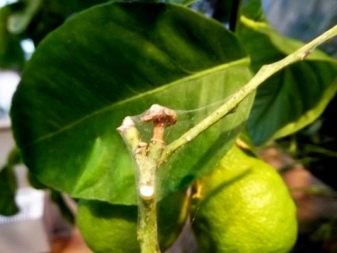
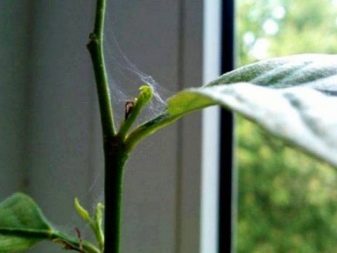
- Aphid. A very insidious pest that spreads quickly and weakens plants. Here, too, soap solution will come to the rescue. But you need to carefully process each leaf on both sides, since aphids settle on the inside of the leaf. You can buy it at the Green Soap store if you don't want to make the solution yourself. It does not need to be bred, it is already ready to work.
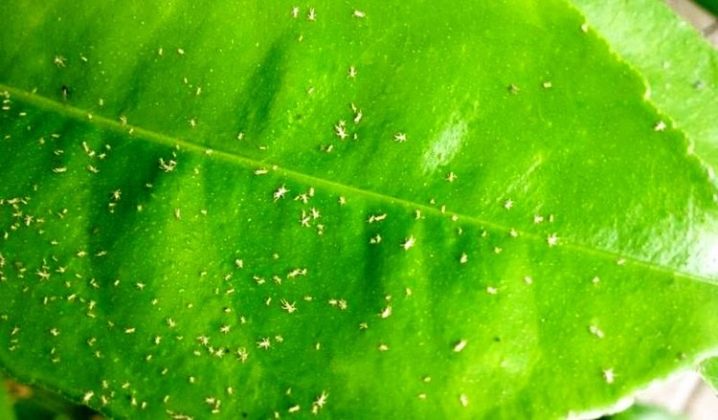
As for fungal diseases, at an early stage, you can treat the tree with "Fitosporin". It is also a good means of prevention. In case of serious lesions, Bordeaux liquid will come to the rescue.
It is best to purchase a liquid solution in bottles. It is much easier to use it, as well as to observe the correct dosage.
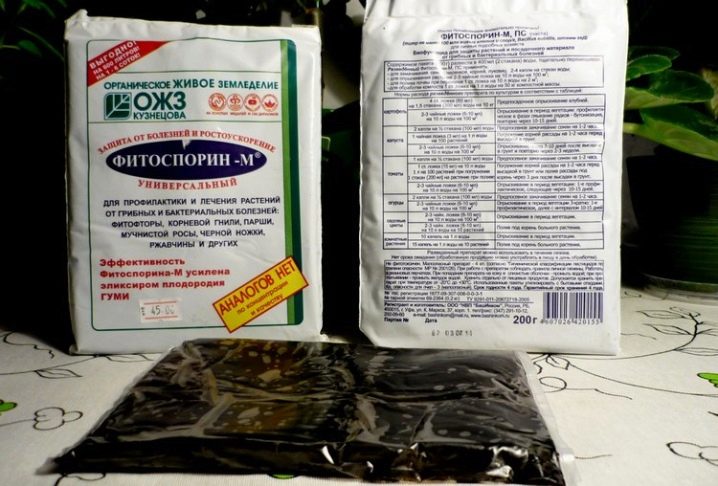
Prevention measures
Rescue and treatment of a tree is a long process that requires effort and time, and not always any manipulations lead to success. It all depends on the degree of damage to the tree. Therefore, it is better to follow preventive measures. Moreover, they are quite simple.
- The tree needs to provide a good source of light, put it in the right place and light it up in winter. Do not place a tree near heaters and batteries. If in the summer the tree stood by the window next to the radiator, then in the winter it will have to be moved to another place.
- Proper watering (timely and warm water) will allow the leaves, flowers, fruits to develop correctly. The moisture content of the earth must be controlled. It is enough to take a handful of earth and knead it in your hands. If there are no marks on the fingers and the earth has crumbled, it is time to water. If black marks remain on the hand and the earth sticks well into a lump, watering is definitely not needed yet.
- Top dressing will support the tree, increase its immunity, which means there is a chance to prevent the development of diseases. It is better to use specialized citrus fertilizers, where all nutrients and nutrients are balanced.
- Periodically, you need to carefully inspect the lemon., wipe dust off the leaves, spray to maintain normal humidity levels. Regular inspection will allow you to detect pests in time and get rid of plants.
- For the purpose of prevention once a month, you can spray the plant with "Fitosporin" or soapy water.


























The comment was sent successfully.